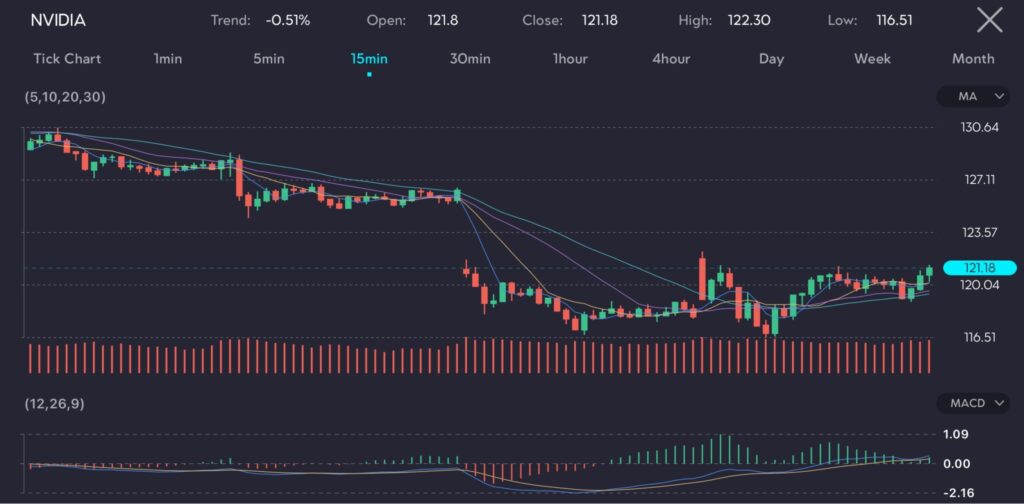Key Points:
- Nvidia shares plummeted 6.7%, erasing over $200 billion in the market cap.
- Comments by Donald Trump on Taiwan and the potential export restrictions to China under Biden’s administration spooked investors.
- Mega cap tech sector saw significant declines.
This article is a follow-up to: Nvidia boosts stock gains
Nvidia (Symbol: NVIDIA) experienced a dramatic 6.7% drop leading to a staggering loss of over $200 billion in market capitalisation.
This decline came after former president Donald Trump suggested that Taiwan should finance its own defense, causing jitters among traders.

Picture: Stock price of Nvidia drops geopolitical tensions and regulatory concerns spook the market, as observed on the VT Markets app.
Taiwan is a critical hub for global chip manufacturing, and any geopolitical instability there could have far-reaching implications for the semiconductor industry. Furthermore, the Biden administration’s plans to impose new export restrictions to China added more anxiety to the market.
This drop in the stock price of Nvidia is a reminder of the inherent volatility in the tech sector, particularly for companies involved in semiconductors.
At the end of June, Nvidia had already seen a massive selloff that wiped out more than $500 billion in a three-day span. Despite these fluctuations, Nvidia’s stock has still managed to gain nearly 150% since the beginning of the year, underscoring its strong performance in market turbulence.
The selloff in Nvidia was part of a broader trend that affected the entire mega cap tech sector. The magnificent seven stocks, which include other tech giants, collectively lost about $500 billion in market value.
This follows a similar decline last Wednesday, when these stocks shed over $600 billion in valuation. The shift away from large-cap tech stocks towards smaller companies has been marked by significant market pain.
Outlook for the tech sector
For day traders, the recent price action of Nvidia offers both risks and opportunities. Volatility presents potential for quick gains, but also substantial losses.
Complemented by risk management plans, monitoring geopolitical developments and regulatory announcements will be crucial for making informed trading decisions.









